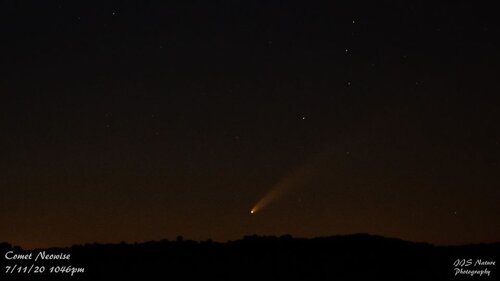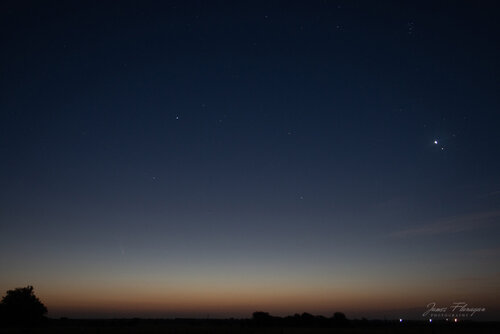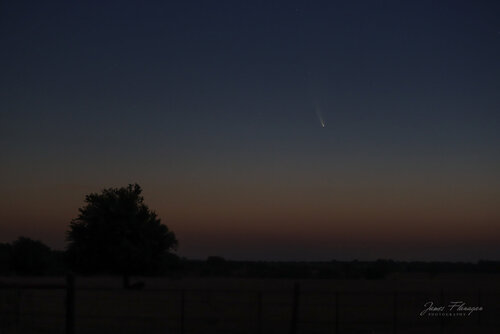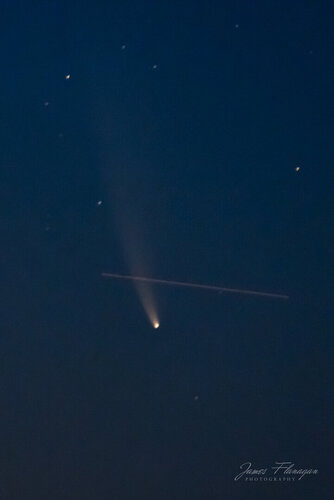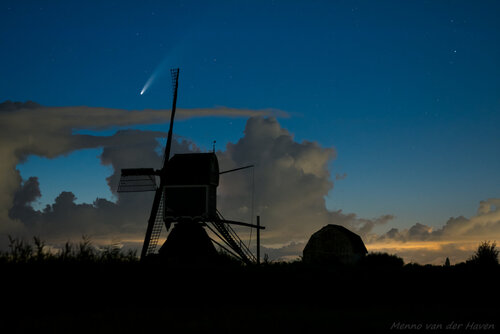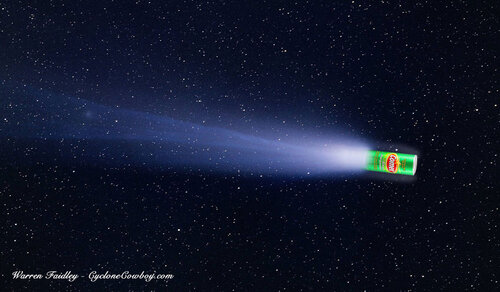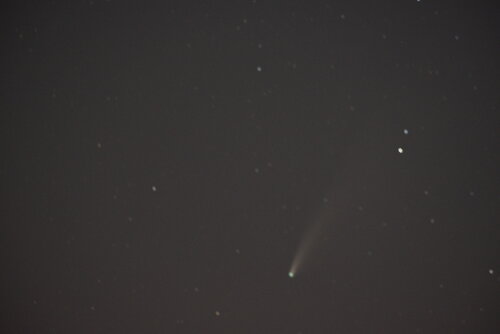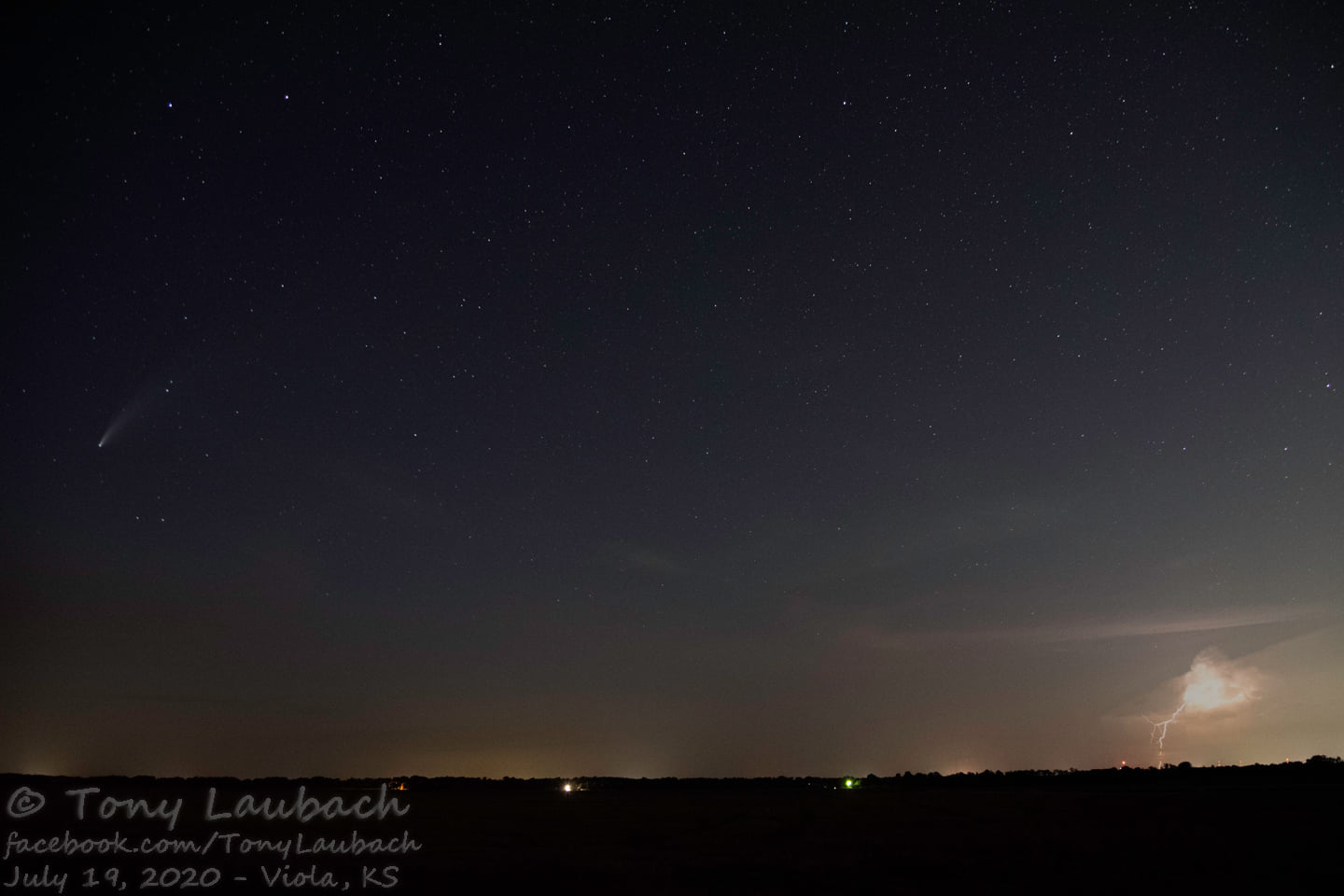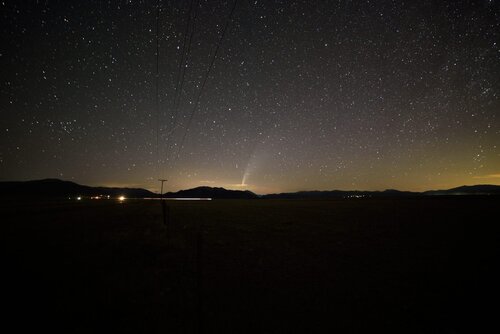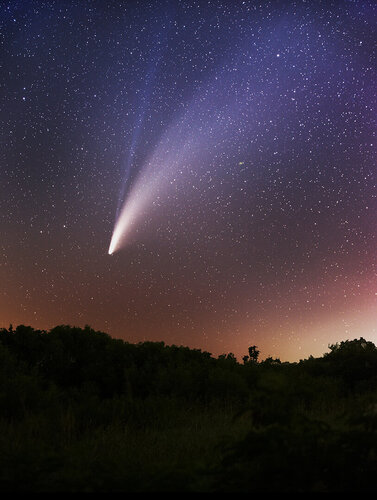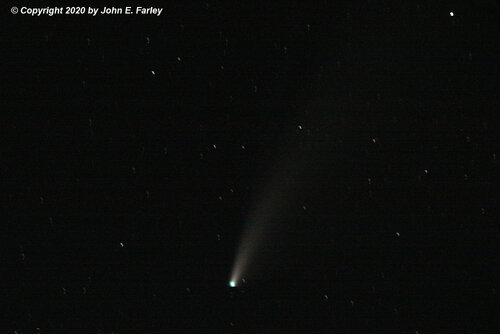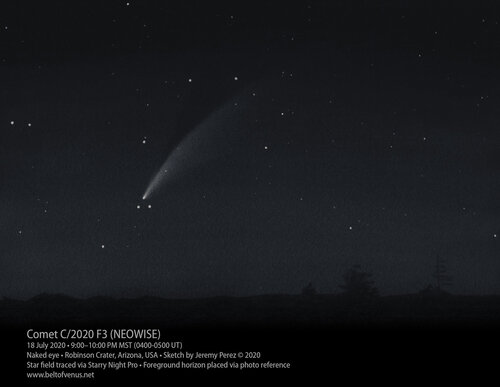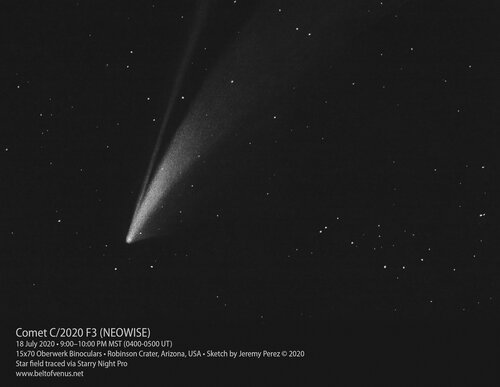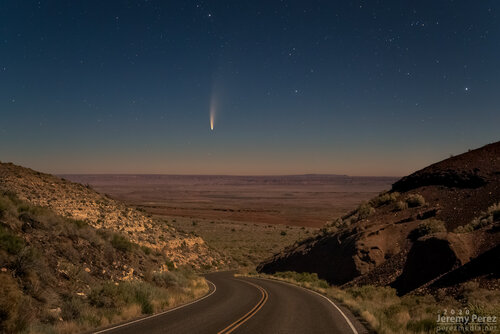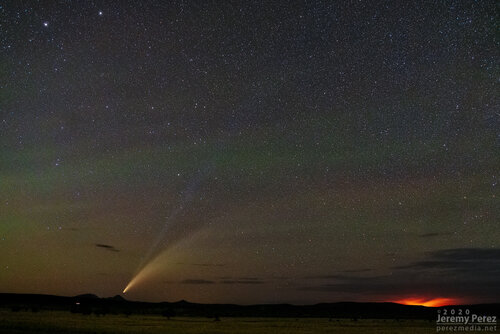I'm a little surprised there hasn't been a thread already started for this, so I guess I will start one!
I've always been interested in all things science since I was a little kid including rocks, geology, and volcanoes, to astronomy, to of course weather.
As luck would have it, I was up camping on the Missouri River west of Yankton, SD this past weekend. Once the pictures started coming out on the internet of the comet and updates stating you can see the comet with the naked eye, I knew I had to bring my camera equipment and see what I could grab.
The first night, Thursday night(Friday AM)7/9, I went out about 445a, sure that somehow I wouldn't be able to see it, but I could immediately see it before even getting out my binoculars! I hurriedly ran back inside our cabin and grabbed my stuff. I was able to get some pictures, but the light from the approaching sunrise soon blocked out the comet.
The next night, I knew to wake up earlier to have more time and so I woke up about 4a before the first light started showing on the horizon. I did some zoomed in shots up to 600mm first with my telephoto lens, and then ended with some shots on my 18-55 mm lens so I could get the Missouri River and some of the other foreground.
On Saturday night, I decided to look for it just after sunset while my family and I sat around the campfire. I finally was able to see it about 1.5 hours after sunset (1030p), but had to use my binoculars to see it. I still got out my camera equipment though and grabbed pics of it setting below the NW horizon. This was pretty cool as well because the comet had almost a reddish tint to it just like a sunset.
I turned around got right back up at 4am to take some more shots on our last night of camping. I ended up with over 300 shots, my 8 year old cousin is now addicted to comets and astronomy, and these are my first shots of a comet I've ever taken!
I'm planning on heading out again this weekend when the best part of viewing is now supposed to be 1-2 hours after sunset instead of before sunrise.
Here's the first few edits I've done and if I have any other good/different ones I will post those as well!
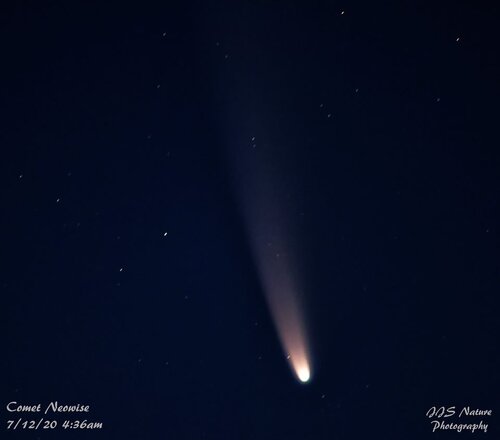
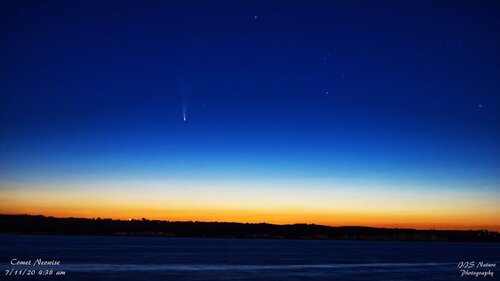
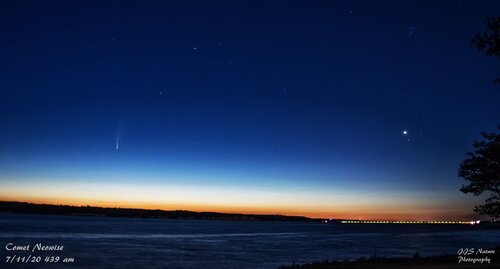
I've always been interested in all things science since I was a little kid including rocks, geology, and volcanoes, to astronomy, to of course weather.
As luck would have it, I was up camping on the Missouri River west of Yankton, SD this past weekend. Once the pictures started coming out on the internet of the comet and updates stating you can see the comet with the naked eye, I knew I had to bring my camera equipment and see what I could grab.
The first night, Thursday night(Friday AM)7/9, I went out about 445a, sure that somehow I wouldn't be able to see it, but I could immediately see it before even getting out my binoculars! I hurriedly ran back inside our cabin and grabbed my stuff. I was able to get some pictures, but the light from the approaching sunrise soon blocked out the comet.
The next night, I knew to wake up earlier to have more time and so I woke up about 4a before the first light started showing on the horizon. I did some zoomed in shots up to 600mm first with my telephoto lens, and then ended with some shots on my 18-55 mm lens so I could get the Missouri River and some of the other foreground.
On Saturday night, I decided to look for it just after sunset while my family and I sat around the campfire. I finally was able to see it about 1.5 hours after sunset (1030p), but had to use my binoculars to see it. I still got out my camera equipment though and grabbed pics of it setting below the NW horizon. This was pretty cool as well because the comet had almost a reddish tint to it just like a sunset.
I turned around got right back up at 4am to take some more shots on our last night of camping. I ended up with over 300 shots, my 8 year old cousin is now addicted to comets and astronomy, and these are my first shots of a comet I've ever taken!
I'm planning on heading out again this weekend when the best part of viewing is now supposed to be 1-2 hours after sunset instead of before sunrise.
Here's the first few edits I've done and if I have any other good/different ones I will post those as well!





